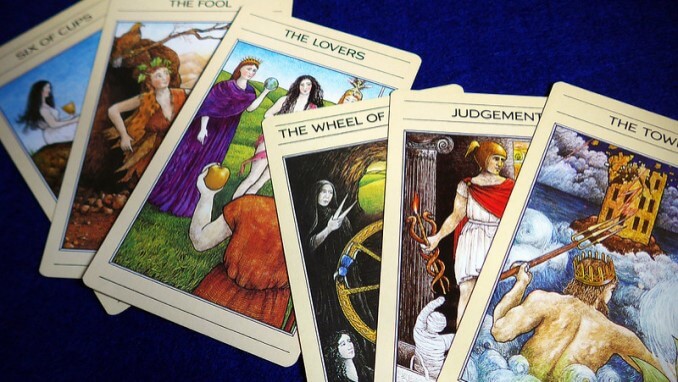
It never ceases to surprise and delight me how the creators of modern board games are able to consistently push the envelope in how relatively simple materials can be used to create elaborate and beautiful game components to support themes and enable players to immerse themselves in the lore of the game. The potential for cardboard has long ago moved beyond the limitation of the 2D board into the construction of 3D models of trees, ships, spaceships and so on.
One of my current favourites, ‘Wingspan’, contains components which represent eggs, a bird box from which food can be gained, dice showing different types of bird food, and of course several hundred (if you have the expansions) beautifully drawn cards representing a dazzling diversity of bird species.
It would be difficult to imagine that one could use these components to do anything other than play the game of Wingspan as it was designed, given their specificity. Fortunately, it is unlikely one would want to, given that it is such a well-designed and enjoyable experience.
Infinite Possibilities for Play
There is however another class of ‘games’, made up of components and concepts that are much more generic, and which therefore allow an almost infinite number of possibilities in play. These are not games in their own right, so much as games systems which have spawned many games, and which continue to do so. They often also inspire the creation of other unrelated games and games systems. Have you noticed, for example, how many card games, even if their theme has been radically changed, still contain 52 cards, or are differentiated into ‘suits’? (Although this may partially be to do with economics, as games components manufacturers tend to offer these ‘standard’ print specifications more cheaply).
Physical components

Among the oldest and most widely used games systems are playing cards. And in that category, I also include related card-based based systems such as the Tarot, and conceptually similar components made from different materials e.g. Mah Jong tiles.
Conceptual analysis of games systems allow us to get to the underlying mechanisms which make them so versatile in play, and provides excellent inspiration for game design. We can, from this basis, not only imagine new ideas for play using these specific objects, but also imagine how the same play experiences can be realised using different objects which have the same characteristics. A few of these concepts are:
- Magnitude – cards have values which can be compared with each other (Snap), used in arithmetic (Blackjack), sequenced (Whist), matched (Go Fish), grouped (Rummy), form complex combinations, or combinations of combinations (Mah Jong)
- Suits – categories can facilitate grouping (Solitaire), Evaluation (Poker), powers (trump cards)
- Attribution – values or suits can be attributed special characteristics (wild cards), or actions (Crazy Eights)
- Narrative – more explicit in Tarot cards, but even ordinary playing cards can have meanings attached (dead man’s hand, cartomancy, ace of spades as bad luck)
- Etc.
Their design as physical objects affords several ways of using them
- Revealed or hidden information – the two-sided design of cards means that their characteristics can be at any point in the game shown to or hidden from players, and furthermore that disclosure can apply to some players and not others
- Inclusion or exclusion – certain values or suits can be excluded from play, or play can be limited to small subset of cards (one’s hand)
- Randomisation – cards and tiles can be shuffled
- Etc.
In turn, the above characteristics make it easy to create specific kinds of play experience
- Competitive (Bezique) or Cooperative (Bridge)
- Chance (Beggar my Neighbour) vs Skill (Gin Rummy)
- Gambling
- Bluffing
- Etc.
Games design challenges
- Take a standard pack of cards, and a theme (e.g. building a railroad, learning to be a wizard, ballroom dancing, whatever). For the first set of bullet points list as many ways as you can think of that those concepts could support your theme. E.g. The suits of cards could represent different schools of magic, the values could represent different levels of skill in specific dance steps.
- Randomly choose three of four of the bullet points above (or concept within, if they have more than one example) and design a game which show those characteristics but uses playing pieces other than playing cards

Dice as Games Systems
Older even than playing cards are dice, which date to a time before recorded history, and which were probably derived from the knucklebones of animals. Often seen these days as a component in games which also contain many other types of components, especially where random number generation is required, there are nevertheless many hundreds of games which can be played with dice alone.
At first sight these are less complex systems than playing cards, and the overriding characteristic of dice is their ability to randomly generate numbers, however we could also think about them in this way (with some modern additions that sheep’s knuckles would not have had), and we then discover that many of the same characteristic and modes of play can apply to dice
- See Magnitude above – as objects which display different values, dice can be conceptually similar to cards in this sense. Additionally, polyhedral dice allow the generation of a wider range of numbers (e.g. RPG dice typically comprise the five Platonic solids and also a ten-sided die)
- Suits – plastics and other materials allow us to create dice which can be different from other dice (or similar). For example, see the used of coloured dice in ‘Waggle Dance’.
- Attribution and narrative can also work in a similar way for dice as they can for cards. For example, throwing a six in many games activates a second roll, or throwing a double even sends you to jail if you do it too often (Monopoly)
Unlike cards, dice are 3D objects and although this may not be a commonly-used attribute in play, this can facilitate
- Building structures, including balancing
- Using them to represent in-game objects or characters (Dragon Dice)
- Arranging them as a numbered playing surface
- Etc.
Games design challenges
- Take an existing card game that you know well, and then work through how it (or something very similar) could be played using dice instead of cards. What elements could remain the same, and which would need to be adapted? How would you cope with, for example, the probability that throwing dice produces duplicate values whereas a pack of cards contains 52 unique entities? Go with the flow and see where this thought experiment takes you in creating a familiar yet brand-new game.
- Look at an existing board game you own or have played, which contains physical components. Either work out a way to use one of the components in an unusual way, within the existing game (e.g. use the number on scrabble tiles to create numeric values instead of words), or create a whole new game around your new way of using the playing pieces
Looney Pyramids
A more recent, and very successful game system is Looney Pyramids (also known as Icehouse Pyramids). These are colourful Perspex pyramids which have a number of attributes (I’m sure you are getting used to this idea now, and can imagine the kinds of play this might allow)
- Value – indicated by size – there are large, medium and small pyramids, and relative value is also indicated by 1, 2 or 3 pips moulded into the surface of the pyramid
- Colour – a ‘suit’ of kinds
- Stackability – smaller pyramids can perch on top of larger ones and larger ones can cover smaller pyramids (or other small objects)
- Opacity or transparency – some pyramids can be seen through while others can completely obscure things underneath them.

Rather than set you a Looney Pyramids challenge, I invite you to explore the thriving Looney Pyramids community who between them have created 100s of games. Notable examples include Zendo and Zarcana (which also uses Tarot cards as a playing surface). Visit the unaffiliated fan site to find many other player created games
Other Games Systems
Other physical game pieces you may want to play with in similar way in your game design experiments:
- Counters or tiddlywinks
- Dominoes
- Chess or draughts (chequers) pieces
- Playing surfaces, e.g. boards
- Etc.
This only scratches the surface of the physical games systems that are available, or that have inspired games designers down the years. Consider for example, the many games that use recognisable components from existing games and create entirely new experiences. Dozens of games use an eight by eight chequerboard, and, for example, you use all the components of Chess (along with some move-busting cards) in the wonderfully bonkers experience that is Knightmare Chess.
And the above doesn’t even consider the conceptual systems such as Dungeons and Dragons (D20), GURPS, Unisystem, Advanced Fighting Fantasy (designed to help players create their own games similar to Steve Jackson and Ian Livingstone’s books) and similar, which provide frameworks for character and narrative creation, which, combined with a gamemaker’s imagination can provide a limitless source of different story/play experiences.
But these will have to be the topic of other articles, along with other game design challenges – where we can look more closely at how these kinds of experiences might be adapted to create learning experiences.
- James Bore – The Ransomeware Game - 13th February 2024
- Ipsodeckso – Risky Business - 23rd January 2024
- Review – Luma World Games - 15th December 2023





I see what you mean about using simple elements to create games (games that perhaps are not related to the game the element was part of).
In TB4C I gave a suit of 52 blank poker cards to the students so they used them for prototyping. About 3 teams complaint that they would have used more cards at the end. Only one team use them to create a “Poker hold’em” type of game. But the large majority use the cards to write questions on them and did not consider any other affordance of the cards.
The point I’m making is that simplicity also needs a bit of structure. Specially people that never designed a board game, or play enough board games to consider designing their own one, some for of scaffolding is needed so they understand mechanics, and what affordances elements + mechanics can deliver.
Nonetheless, the challenge to design new games with ‘old/known’ elements sounds really interesting. For sure it can be added to TB4C. One thing I learned through the study of games, is that well-designed games can be won in many ways. And winning for the spider may not look like winning to the fly 🙂 [paraphrasing Morticia Addams].
I’m glad you like the idea of design challenges, and I think you’re right, that it would definitely be something that could be added to the TB4C. Innovation after all is nothing more than combining exisitng ideas in novel ways, so these kinds of prompts are simple ways of triggering creativity in learners (as well as being fun – because experimenting is delightful)